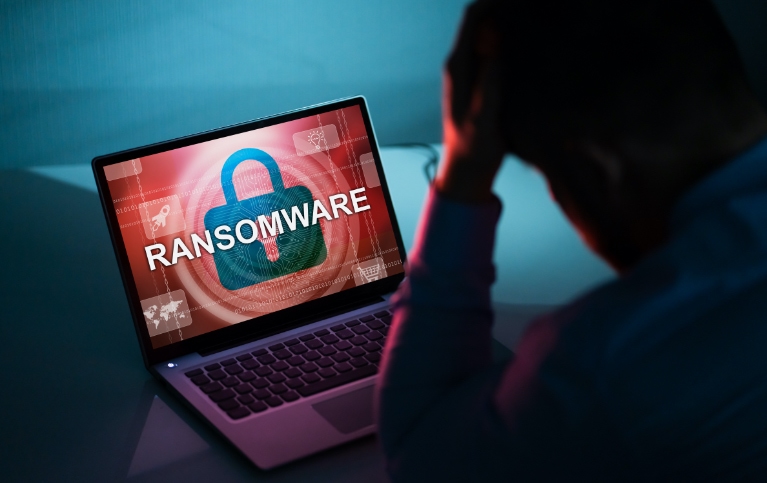For those who don’t know, ransomware is a type of malware designed to encrypt its victims’ data or systems and hold it hostage until the ransom is paid, usually in cryptocurrency. Ransomware’s roots began as a simple Trojan virus that spread during a 1989 World Health Organization conference, but over the years, it grew into a multibillion-dollar industry. In 2021, ransomware is capable of spreading to entire networks and even hijacking critical infrastructure.
Organizations in Tampa, Chicago, and the wider United States have suffered increasingly severe ransomware attacks over recent years. Yet despite the surge in the number of ransomware attacks and their resulting damages, thousands of businesses still remain unprepared for potentially business-halting attacks. To safeguard your company’s future, here’s what you need to do to protect your business from the growing ransomware threat.
Related reading: Check out the worryingly fast evolution of ransomware attacks
Secure your network
The first step to reducing the risk of ransomware attacks is to fortify your network. For starters, you’ll need to install next-generation firewalls to block users from known harmful sites. These firewalls even come with intrusion prevention capabilities that inspect internet traffic for malicious payloads, like autorun processes that encrypt data, and stops them from infiltrating your network.
Network segmentation can also beef up your defenses against self-propagating ransomware. This essentially means you’re dividing your network into multiple segments that work independently of each other with their own set of access permissions, data, and internet bandwidth resources. In practice, your company can create a segment just for guest users, specific departments, and certain users. So should an unwitting user get their device infected with ransomware, it won’t be able to spread laterally across network segments, effectively minimizing its potential damage to your systems.
What’s more, proactively monitoring your network for any abnormal behavior will help you quickly respond to a ransomware incident. First-rate managed IT services providers like Dynamic Solutions Group can help you in this regard.
Filter your emails
Like most malware, ransomware usually spreads through phishing emails containing dangerous attachments and links. These scams establish trust with victims by spoofing email addresses that appear to come from legitimate sources like a company, executive manager, or even a friend. Some phishing emails will even create a sense of urgency by concocting fake emergencies (e.g., unusual bank account transactions and COVID-19 advisories) or limited promotions to trick users into unleashing ransomware on their devices.
Email filtering software like Microsoft Defender for Office 365 reduces the chances of employees encountering ransomware-laced messages. At the most basic level, you can configure the software to block spam and untrustworthy emails, such as those that have no affiliation with your company. Going a step further, advanced email filtering can instantly scan and block messages for common phishing elements like spoofed email domains and suspicious attachments. It can also verify a URL’s source and even test email attachments in virtual environments to check whether they contain potentially harmful programs.
Install anti-malware software
Anti-malware software leverages the latest threat intelligence databases to detect and stop ransomware threats before they can harm your systems. This includes known threats like WannaCry, Petya, and Maze. Advanced anti-malware solutions are now also capable of adaptive analysis to identify threats that have yet to be discovered. It does this through a combination of machine learning techniques and sandboxing detection, which tests suspected malware in an isolated environment to see how it behaves. If a suspected malicious program is attempting to modify or encrypt files, anti-malware software will flag this as ransomware and remove it from your systems to prevent a major security incident.
Keep software up to date
Over time, cybercriminals may uncover new vulnerabilities in software that will allow them to infiltrate your systems and infect them with ransomware. In fact, many cybercriminals today are exploiting remote desktop vulnerabilities in outdated Windows operating systems that let ransomware spread to devices connected to company networks. Installing the latest updates for your software, operating systems, and security apps is therefore key to protecting your business from these threats. Using patch management software will help you track software updates and distribute patches to all company-registered devices from a central console.
Back up data regularly
Data backups are the most effective way to deal with a ransomware attack. Instead of giving in to the hacker’s demands, you can completely bypass any ransom payments by restoring previous versions of your data before it was compromised. To ensure smooth data recovery in case of a ransomware attack, you’ll need to do the following:
- Adopt a 3-2-1 backup policy – You need to keep at least three copies of your data in two different storage media with one copy stored off site. For example, you have a production copy of your files on your device, with two copies stored in a local backup server and in the cloud. This way, you can still recover your data even if one set of backups fails.
- Automate backup processes – Proven backup solutions can be configured to automatically copy data, transfer it over the network, and store it on backup servers. These solutions even allow you to set a schedule for backups and determine the type of data that gets backed up.
- Protect your backups – Data backups must be stored in a safe place with multiple security measures. This means your backup servers should have stringent access restrictions, advanced network protection, and strong physical security. Also, files should be heavily encrypted and saved as read-only to defend against ransomware modification.
- Test backup and recovery procedures – Once you have backups in place, you must review them regularly to make sure you can use them to recover data in case of a ransomware attack.
Train your staff
No matter how strong your technical defenses may be, providing security training to employees is still important to protect against ransomware. Employees must learn the telltale signs of phishing scams and be critical of everything they see online. For instance, employees should immediately be on guard when an unsolicited email claims an emergency like unusual account activity and urges them to click on a suspicious link. They should also be cautious of visiting unverified websites that are covered in ads, offer free gifts or software, or don’t have an HTTPS prefix.
While educating employees through monthly lectures is a good idea, giving them real-world experience through phishing simulations services like KnowBe4 can help them develop a healthy skepticism on the internet. Beyond identifying and avoiding scams that may contain ransomware, your training program should also teach employees to set long and unique passwords, avoid unsecured Wi-Fi networks, and regularly back up their work.
Create an incident response plan
An incident response plan includes a set of procedures that must be performed on the off chance that ransomware hits your business. These procedures involve disconnecting compromised devices from the network to contain the threat, removing ransomware using anti-malware software, utilizing decryption tools, and recovering data from your backup servers.
Then, you’ll need to review your existing security measures to investigate how the attack occurred. Your investigations may reveal that software is unpatched or your networks are not properly configured. Meanwhile, if phishing scams were the cause of the ransomware infection, your employees may need to take a refresher course to fortify their cybersecurity knowledge so they’re no longer a security liability to your company.
If all of these steps seem too daunting for your business, Dynamic Solutions Group can help you with ransomware protection. Our consultants will assess your company’s ransomware risk exposure and implement a well-rounded security framework that meets your needs. We offer comprehensive network configurations, proactive security monitoring, advanced anti-malware software, and powerful backup solutions. Call us now to keep ransomware at bay.






